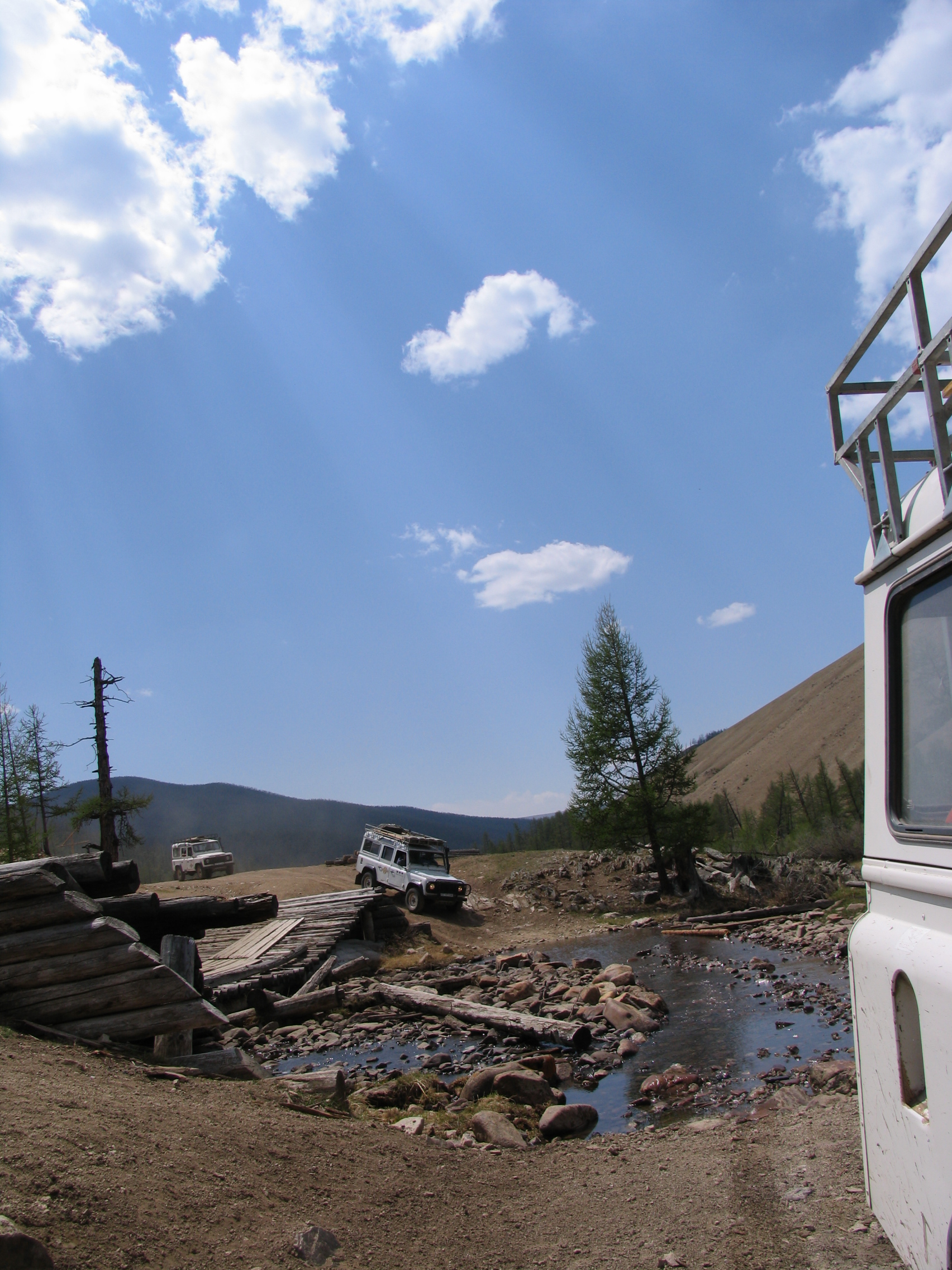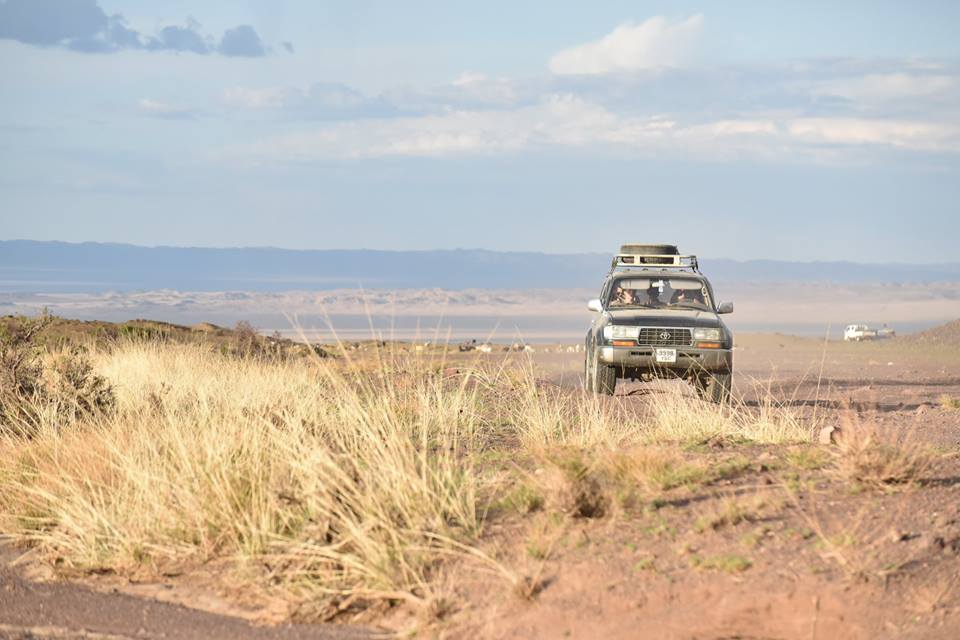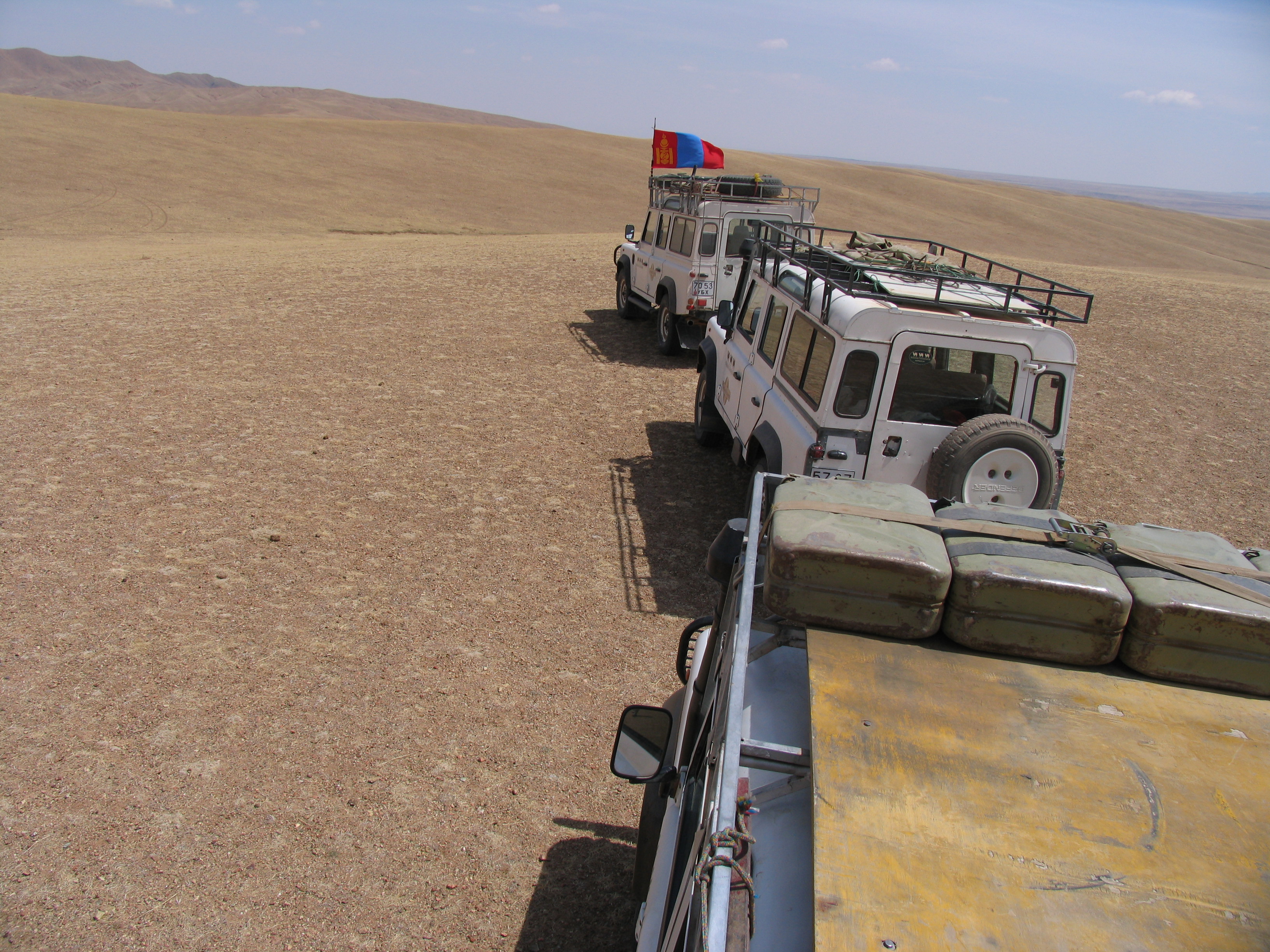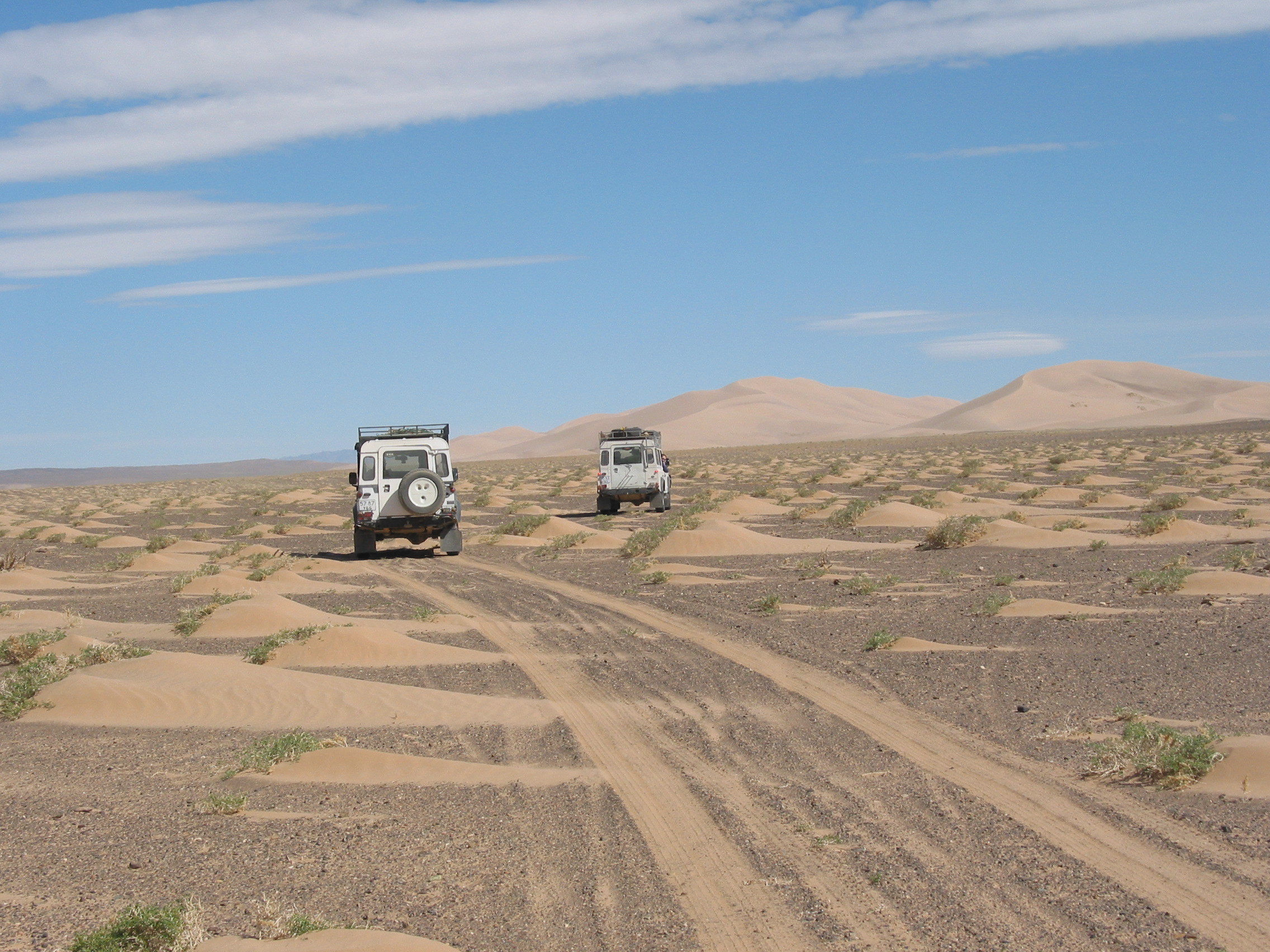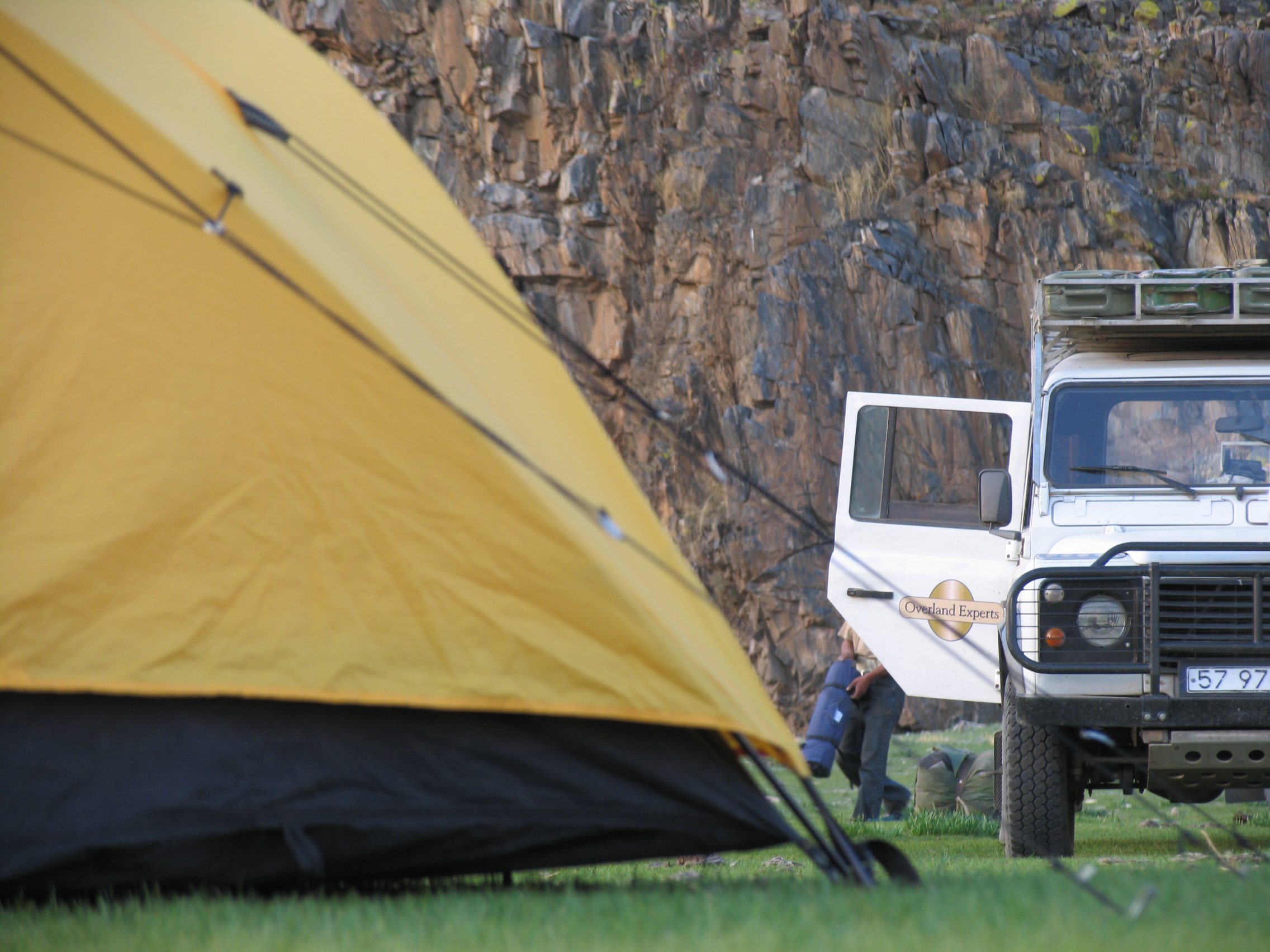As I slipped out into the frigid air of northern Mongolia, I was suddenly wide-awake, despite the moon hanging in the trees high above me. The ger, a traditional round dwelling made of felt and a wooden frame, radiated heat at my back from the small dung stove at its center. My breath made the air misty and the snow on the ground glimmered. My thick boots and socks kept my feet from turning as numb as my nose as I wandered around the group of gers before returning to bed. The world here was quiet, and hummed with a raw, intense power, so different from the chaos of Mongolia’s capital city. It was 6am and -33 F.
 (Photo Bruce Elfström)
(Photo Bruce Elfström)
We had ventured into the steppes of Mongolia from Ulaanbaatar (UB) what seemed like months ago, leaving behind a city screaming with voices and motors. The emptiness of the plains was a shock and a relief after trying to navigate the streets of UB in our Land Cruiser 80 series through the mass of bikes, cars, and pedestrians all flooding the streets. Sometimes we would not encounter another human being for hours or days. No gas stations, no convenience stores, and certainly no motels. Our journey led us through the steppes and finally up north to the edge of Taiga forest, where I found myself spell-bound by the awesome power of winter in Mongolia.
 A breathtaking sun sets over the Mongolian horizon. (Photo by Bruce Elfström)
A breathtaking sun sets over the Mongolian horizon. (Photo by Bruce Elfström)
This was the early spring of 2011, and the team had traveled to one of the most unique and alien places I’d ever experienced. This was one of the trips that marked the very beginning of a non-profit organization we would later call the Mongolia Bankhar Dog Project. The project was truly started by Bruce Elfström, owner of Overland Experts, during the 2004 filming of an IMAX film in the steppes of this wild land: wide, endless, isolated grassland and hills. There he and the crew would often come upon families of nomads, Mongolians practicing a way of life that has existed since before Genghis Khan: herding livestock and grazing them throughout the plains. It was then that he began to learn about the environmental concerns that blanket Mongolia as a country, and the steppes as an ecosystem.
The grasslands stretching across the country have been slowly vanishing due to desertification caused by a combination of global warming and over-grazing. The nomadic lifestyle is also disappearing, as it becomes harder to keep livestock alive due to predation and hard winters. Many nomads believe it better to join the mining industry that is literally ripping the land apart, or move to UB. A haze of thick smog constantly surrounds Ulaanbaatar, a city which contains a quarter of the entire country’s population. Surrounding the lagging infrastructure and tall buildings are thousands of fenced in ger camps overflowing from the city, where there was no running water and people would burn plastic bags full of coal to stay warm. A beautiful country full of rich culture and incredible nature seemed to be at the edge of an abyss, ready to crumble and fall.

Red Scarf with several of her puppies. (Photo by Soyolbolod Serguleng)
Background
In Mongolia, a subspecies of the grey wolf, often called the Mongolian or Tibetan Wolf, shares the land with the nomadic people of Mongolia and their herds. In more mountainous regions, the spectral snow leopard also plays an important role in the environment. Both these predators are a threat to the lifestyle of those making a living as livestock herders, but are also, particularly the snow leopard, threatened species themselves. The complicated relationship between these predators and the humans that are sharing their habitat is a tense one. Because these apex predators often attack herds and have been known to obliterate a herder’s livelihood over night, nomads have resorted to hunting and poisoning them.

A pup trained by the Mongolian Bankhar Dog Project displaying ideal submission to the sheep it will be protecting. (Photo by Soyolbolod Serguleng)
Despite the fact that about 40% of the population follows a herding lifestyle, the younger generation of the nation is looking for more dependable, less risky jobs. As democracy, urbanization, and industrialization continue to rapidly shape this modern Mongolia, people are less willing to live a traditional life in nature, dependent on weather and climatic conditions (Langfitt 2012a). Rising temperatures, severe weather, and increasing desertification make this usually low impact way of life a struggle. Nomadic herders are having a harder time making a profit.
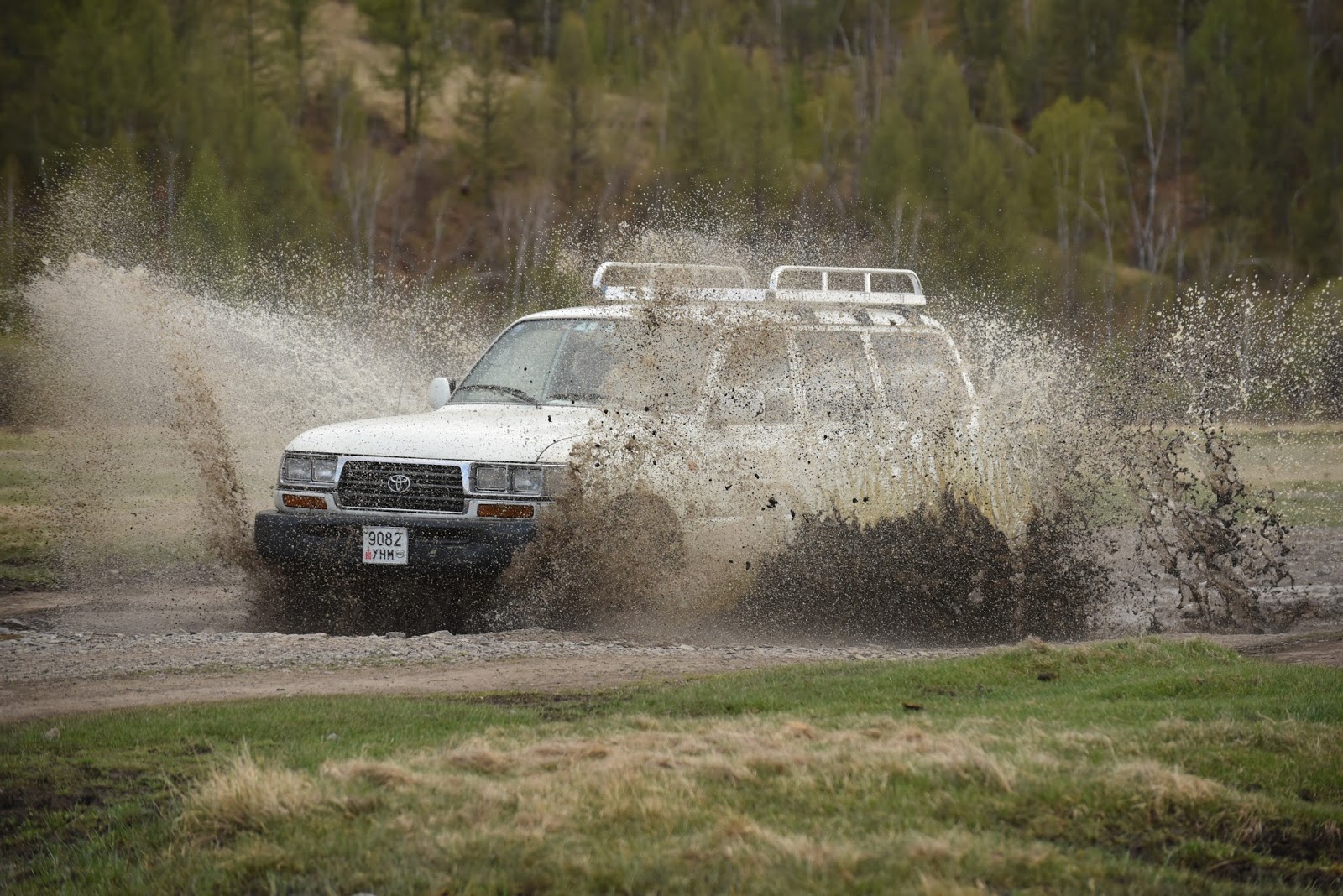
Mongolia in summer can be quite a mess. (Photo by Soyolbolod Serguleng)
The Mongolian culture has a long history of sport hunting where wolves and often snow leopards are concerned. One of our Mongolian acquaintances, whom we met on our trip in 2011, wore a wolf knucklebone around his neck at all times as a sign of strength. This prestige of killing a wolf or snow leopard makes it almost always lethal for wolves or the ghostly cats to be around humans. Many nomads also still believe that if they do not kill these predators, they will lose their entire livelihood, and this leads to retribution killing.
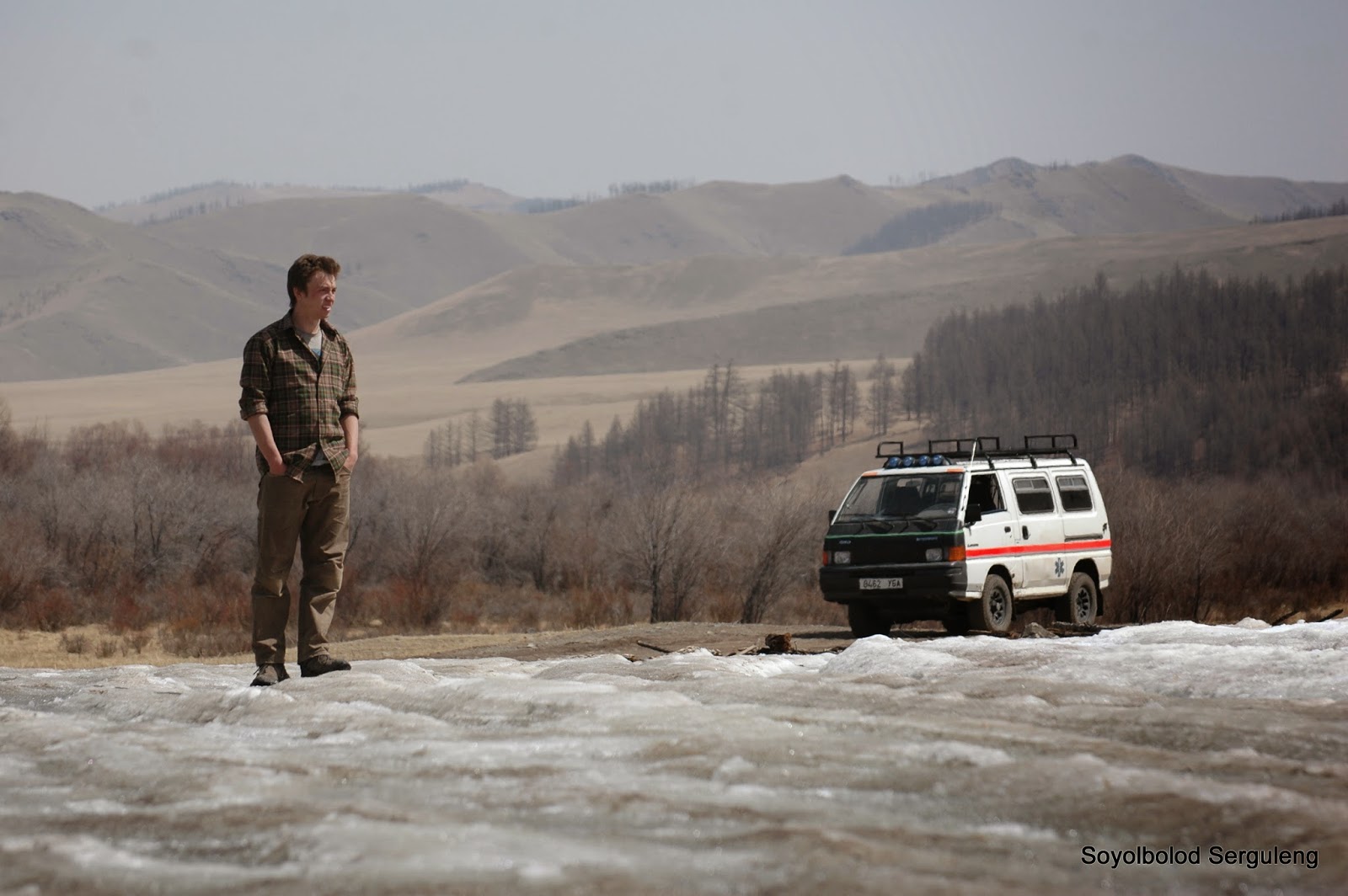
(Photo by Soyolbolod Serguleng)
The Mongolian Bankhar Dog Project
Thus, as we drove across Mongolia, our Land Cruiser’s sturdy frame rattling around us and protecting us from the intense elements outside, we searched for what we believed to be the solution, something that would decrease the conflict between these great predators and the humans with whom they share the land. This solution came in the form of a traditional form of protection that has been used all across the world for thousands of years: a livestock guardian dog.
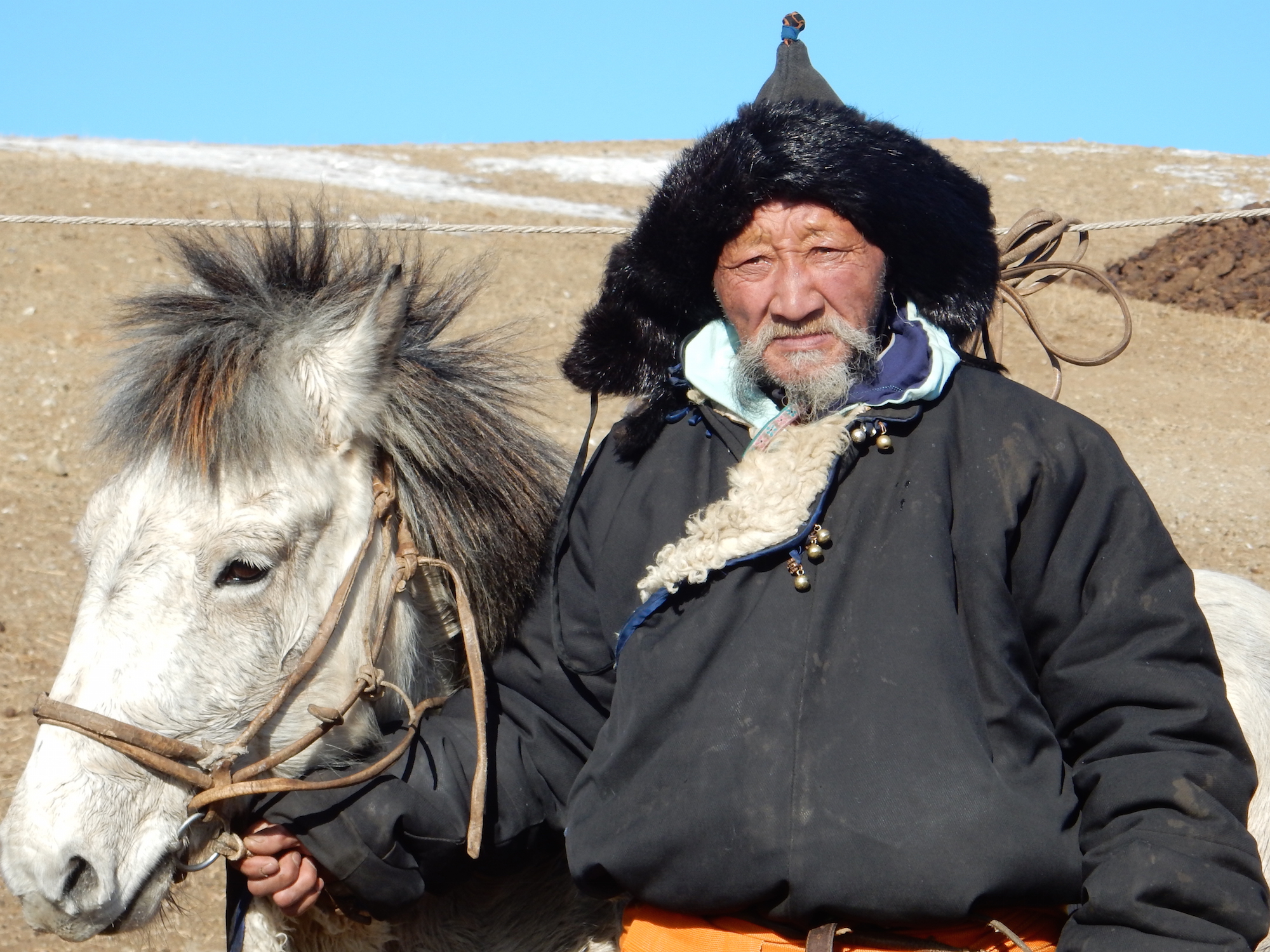
One of the Mongolian elders the team worked with this past year. (Photo by Soyolbolod Serguleng)
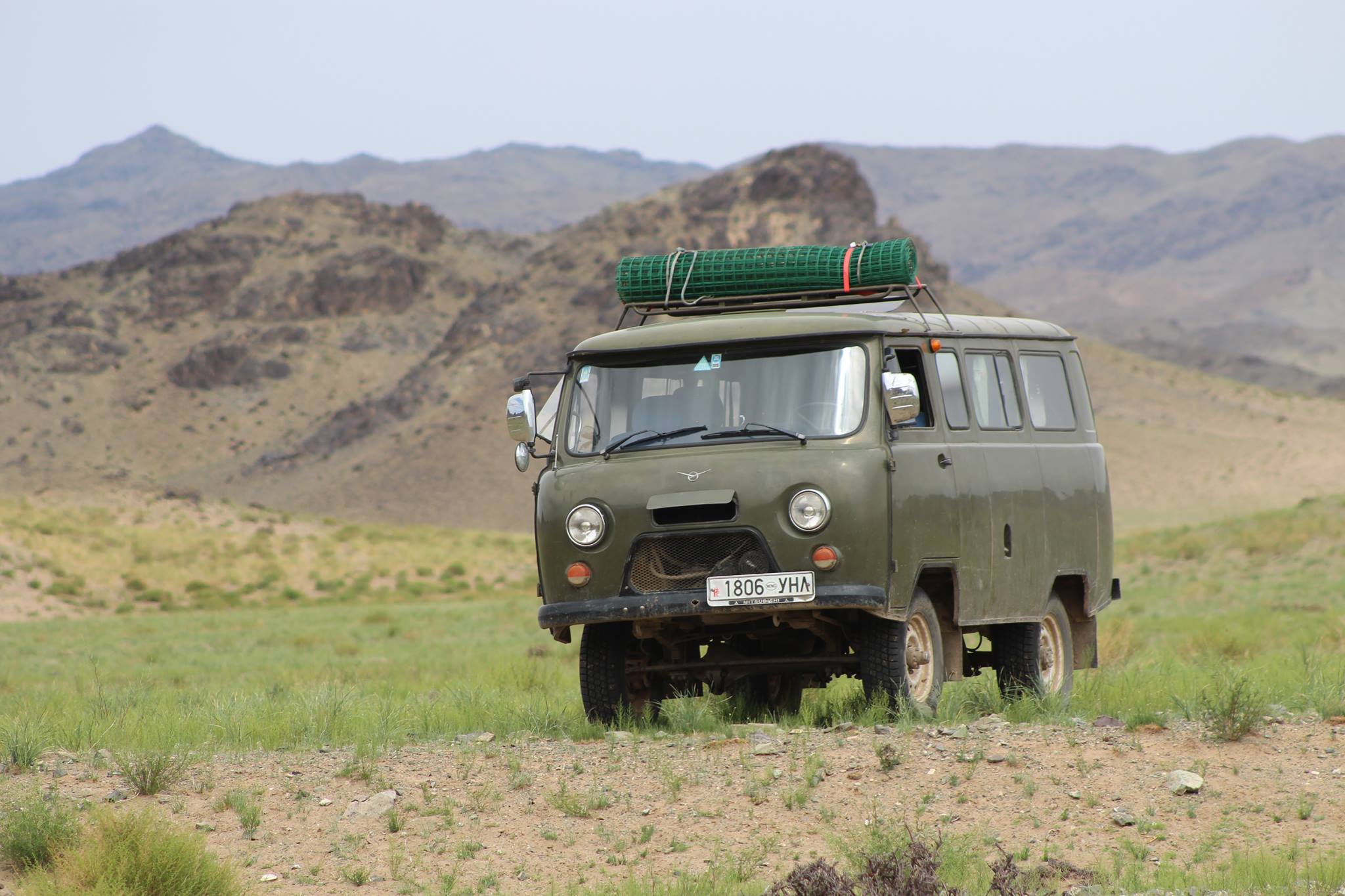
The team’s 2004 UAZ 452, nicknamed “Ivan the Terrible”. Photo by Doug Lally
Years ago, especially before the Russian occupation of Mongolia, livestock guardian dogs were common, and nearly every nomad family had at least one. This type of dog, called the Bankhar, was bred, or co-evolved over hundreds of human generations to bond with and protect sheep, goats, and other domesticated animals, as well as their human owners from any threat. They are big, powerful, and strong-jawed, the ideal guardian. However, these dogs are now extremely rare, the majority having been killed off by the Russian government, most eradicated in an attempt to force nomads into the permanent settlements to aid in the growing industry. Some of these dogs still exist in some isolated, hard to reach communities. If these dogs were brought back and re-introduced into the Nomadic culture, it would decrease livestock predation substantially.
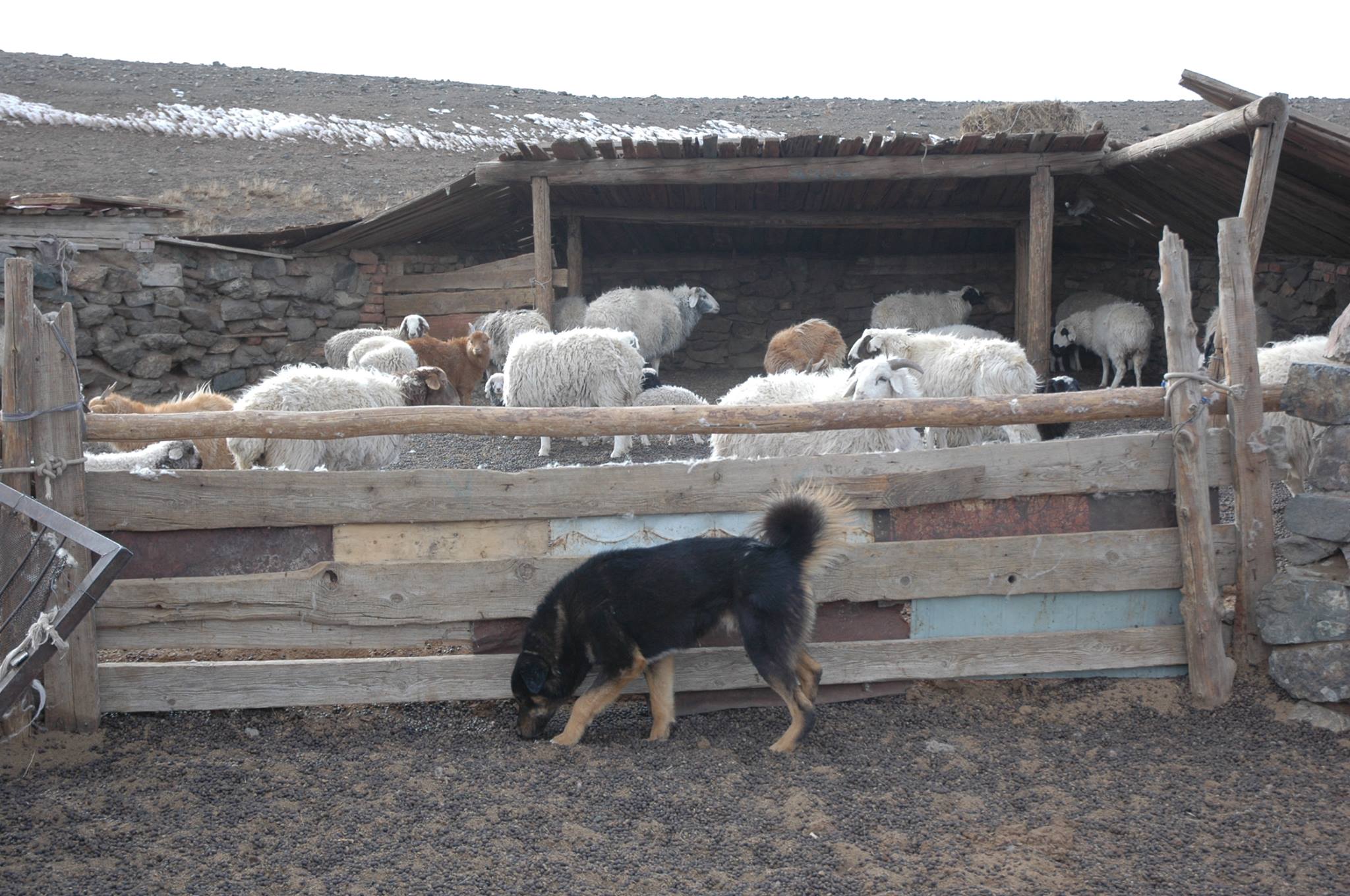
A Bankhar patrolling the sheep enclosure. (Photo by Soyolbolod Serguleng)
As we drove along the seemingly deserted steppe land, ice and frozen grass crumbling under our tires, we peered through the windshield every time we passed a ger village, or a nomad herding his sheep from the back of a horse, hoping to spot the wiry body of a dog loping alongside. Often we would stop and converse with the herder and he’d point us over the hills to his cousin’s or neighbor’s home where we’d find a huge dog barking at us as a greeting. The Bankhar are dogs born with the instinct to protect livestock and to fight off wolves and snow leopards. They even chase away birds of prey, such as the Cenerous Vulture with its 12ft wing span, that threaten lambs and young goats. Predators are less likely to attack a herd that is protected by a formidable guard dog, a fact that has been seen all over the world. The snow leopards or wolves won’t risk a fight with a dog, which may lead to them dying of infection, or starvation from the wounds. If a predator were to attack, the dog also alerts the family and other dogs before chasing it away.
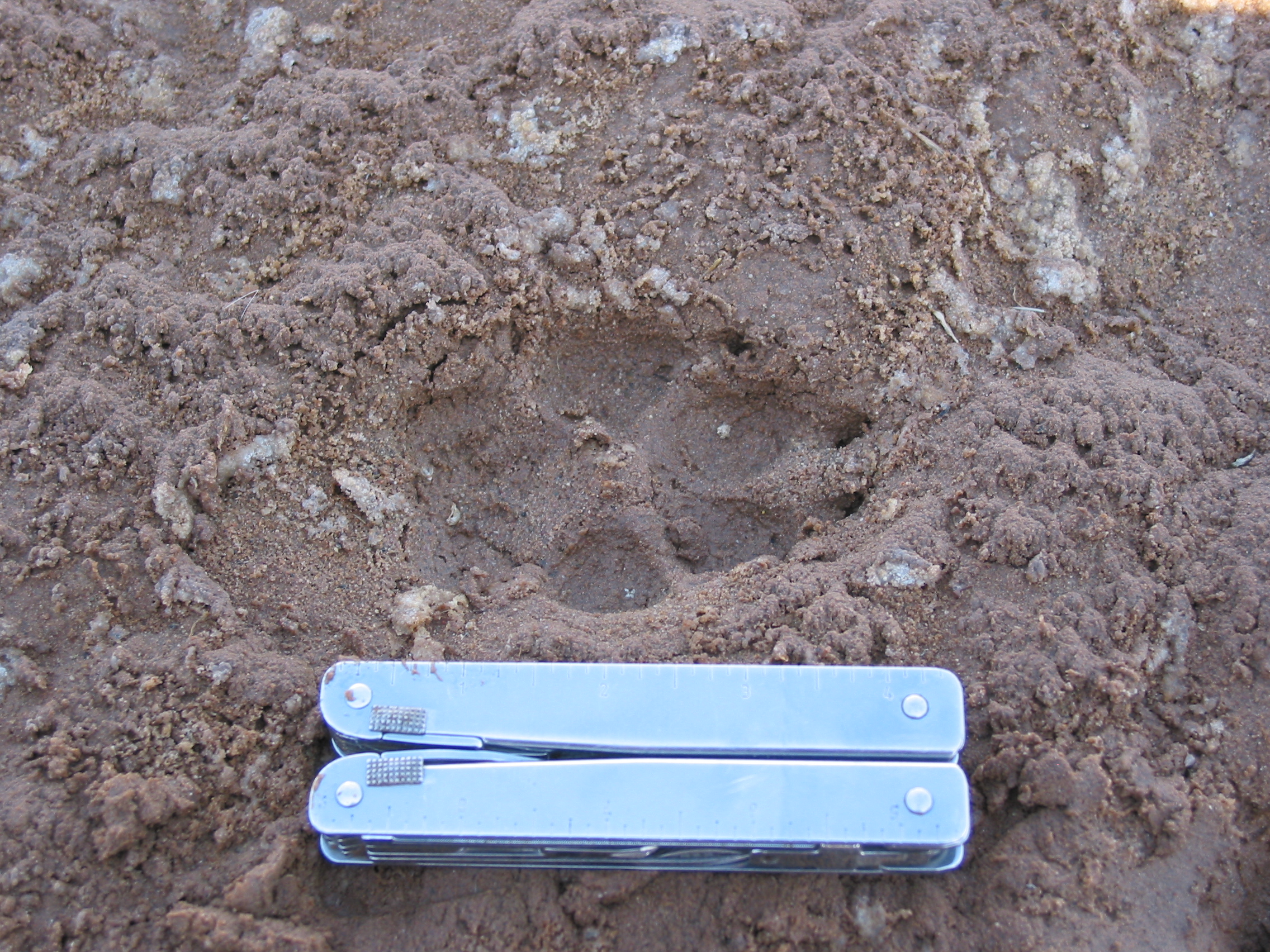
(Photo by Bruce Elfström)
The project has come so far from that cold night in the Taiga, at the end of our journey in 2011. The Mongolia Bankhar Dog Project has become a reality. The project’s mission, as seen on the project website (https://bankhar.org), is not only to provide the nomadic peoples of Mongolia with working Bankhar to preserve their way of life, but also to “allow a herder to practice pastoral husbandry that has a less detrimental impact on the Mongolian ecosystem” and give them incentives to do so. At the same time, the populations of both wolves and snow leopards are sure to benefit.
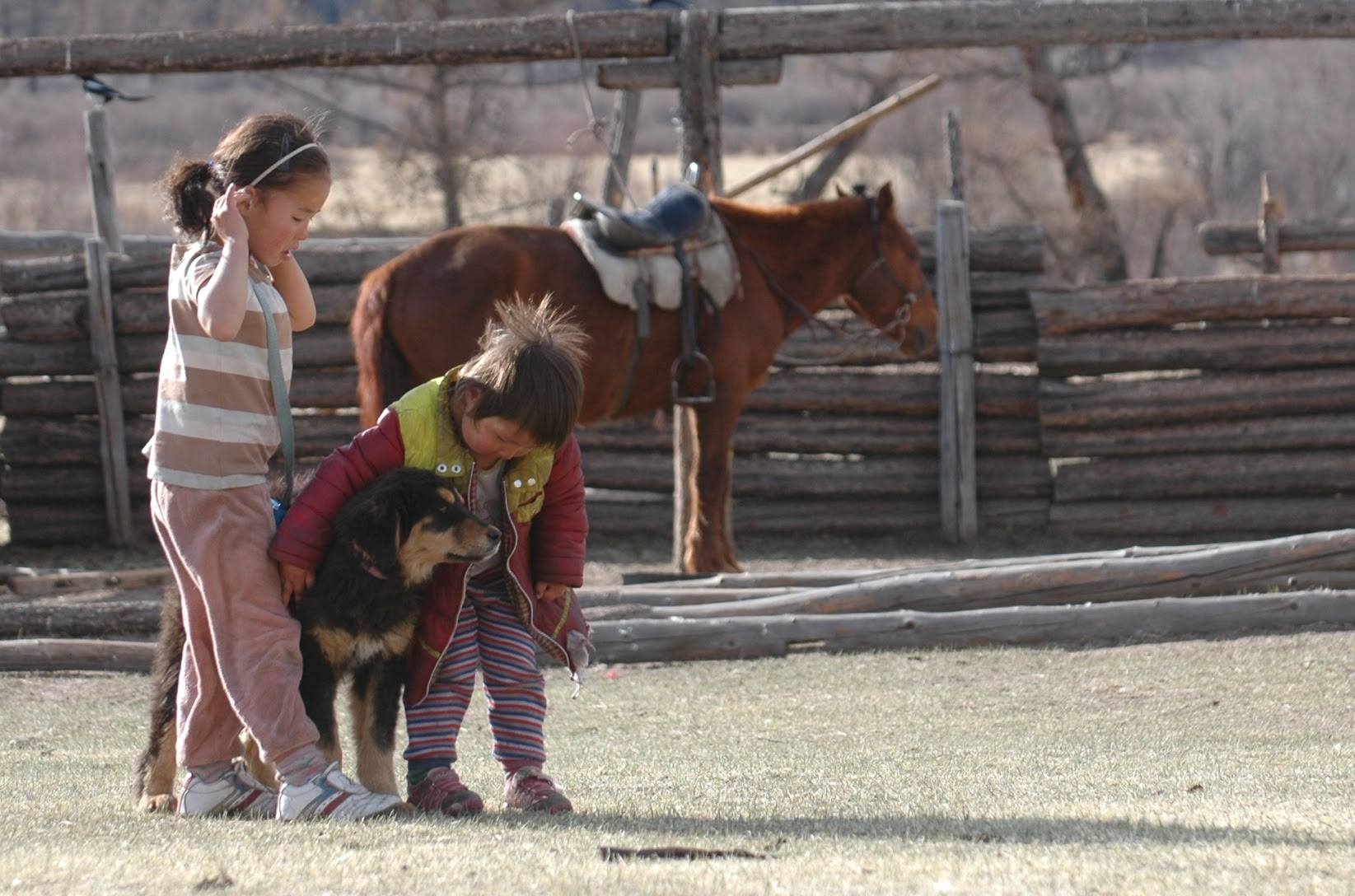
Children embrace their new puppy. (Photo by Soyolbolod Serguleng)
The first step towards these goals, was to find Bankhar dogs with ideal traits, and to buy them from breeders or borrow them from nomads, which involved driving willy-nilly around the steppes. Next a breeding facility was built just outside of Ulaanbaatar and last spring more than 20 puppies were born. The puppies passed through the bonding process magnificently, learning to be submissive to the livestock and humans and equally protective of them. The dogs have been place in two national parks and six dogs have also been given to The Snow Leopard Trust who will use them in a study that is operating in the South Gobi.

Two of our team’s 80 series Land Cruisers in the Gobi ((Photo by Soyolbolod Serguleng)
This vision began with driving across the wild land of Mongolia in an envoy of film trucks and vans of equipment, and I saw it continue from the driver’s seat. Now I see the project continue through the computer screen as our field workers send me updates and photographs of their progress as they too drive around the incredible nation of Mongolia. Their adventures can be read about on their blog here: https://landofeternalbluesky.blogspot.com. The trips for this project will be run by Overland Experts this spring 2016: https://www.overlandexperts.com
::
You can visit the Indiegogo crowdfunding campaign here: Bankhar Indiegogo
You can learn Learn more on the MBDP website: bankhar.org
About the Author: Petra Elfström
A writer who grew up traveling the world behind the wheel, Petra Elfström studies Archaeology, Environmental Studies, and Creative Writing as a student at Hamilton College.

photo by Mike Graeme
Additional Gallery Images:



